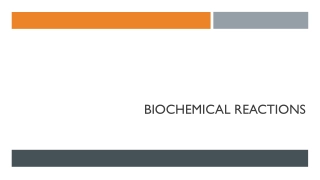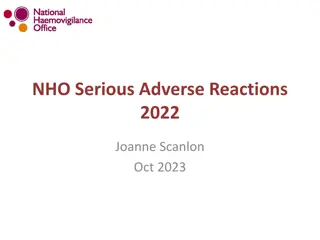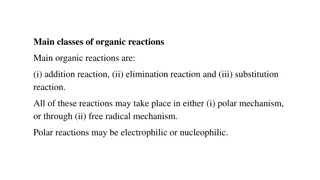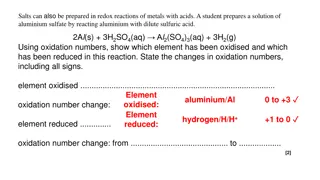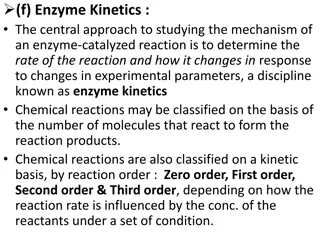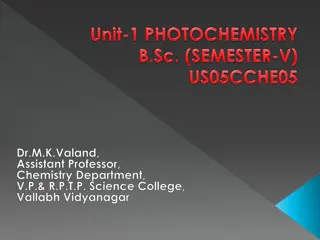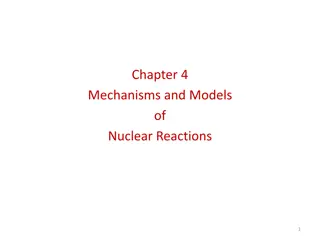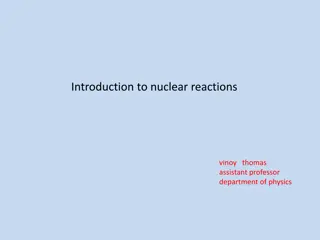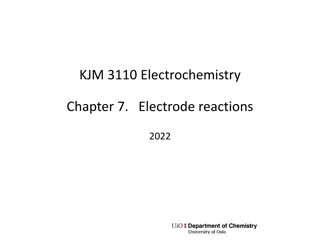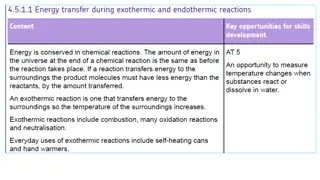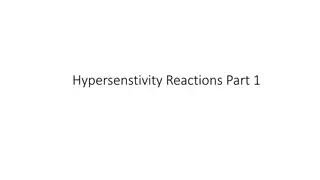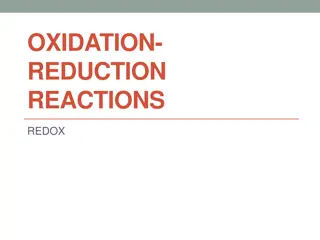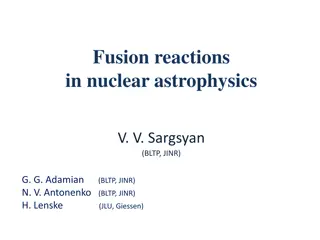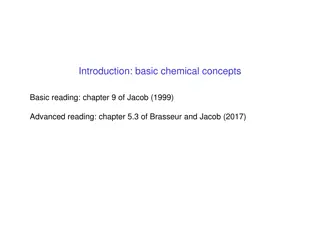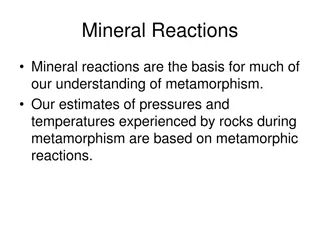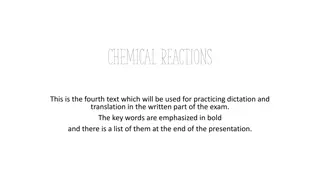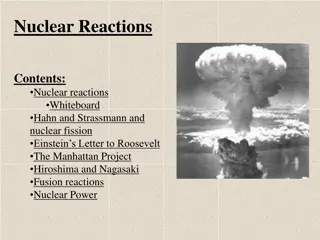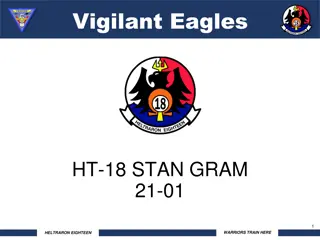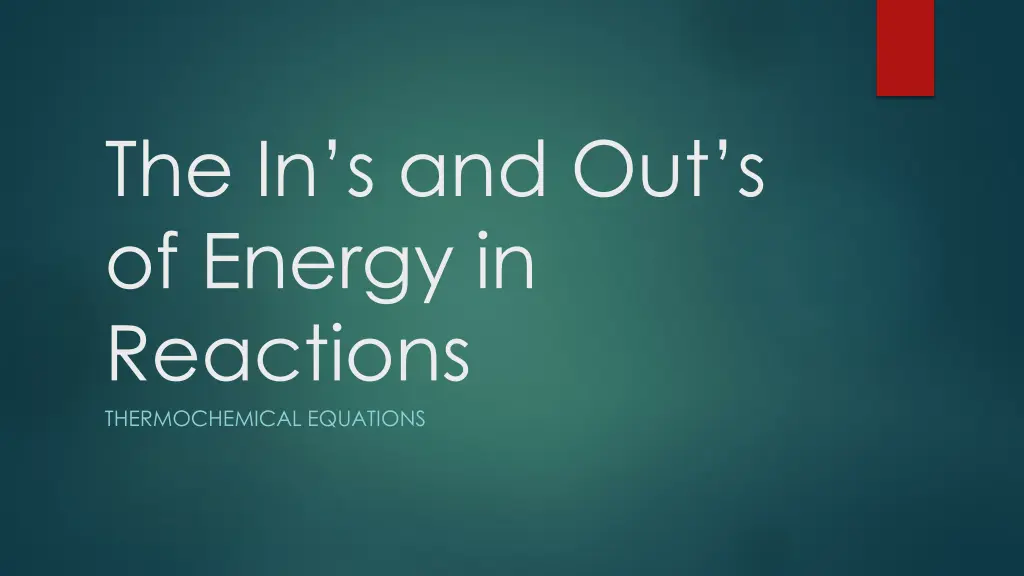
Understanding Thermochemistry and Energy in Reactions
Explore the fascinating world of thermochemistry, calorimetry, and endothermic and exothermic reactions. Learn how to calculate heat changes in chemical reactions and classify them based on energy absorbed or released. Dive into the ins and outs of energy transformations with engaging lab activities and post-lab analysis.
Uploaded on | 1 Views
Download Presentation

Please find below an Image/Link to download the presentation.
The content on the website is provided AS IS for your information and personal use only. It may not be sold, licensed, or shared on other websites without obtaining consent from the author. If you encounter any issues during the download, it is possible that the publisher has removed the file from their server.
You are allowed to download the files provided on this website for personal or commercial use, subject to the condition that they are used lawfully. All files are the property of their respective owners.
The content on the website is provided AS IS for your information and personal use only. It may not be sold, licensed, or shared on other websites without obtaining consent from the author.
E N D
Presentation Transcript
The Ins and Outs of Energy in Reactions THERMOCHEMICAL EQUATIONS
The Chefs Recipe for Successful Cooking If the only product is Ca(OH)2(s), calculate the heat released per mole. If the only product is Ca(OH)2(aq), calculate the heat released per mole. Chemical Heat of Formation (kJ/mole) -635.1 -986.1 -1002.8 -285.8 CaO (s) Ca(OH)2(s) Ca(OH)2(aq) H2O (l)
Energetic Objectives Determine the heat absorbed or released by a chemical reaction using calorimetry. Classify reactions as being either endothermic or exothermic based on experimental data. Write a thermochemical equation that correctly reflects the stoichiometry of the reaction. Use thermochemical equations to calculate energy changes in chemical reactions.
Endothermic and Exothermic Reactions Pre Lab Items Complete pre-lab questions (if you didn t the night before) Write hypothesis that answers the lab question in a complete sentence. You may discuss this with your lab partner. Get questions checked/stamped by instructor BEFORE going into the lab. SAFETY FIRST!!! 1) 2) 3) 4)
Endothermic and Exothermic Reactions Lab Instructions Follow all safety rules and wear safety gear correctly at all times. Follow the directions on the student handout carefully. Dispose of all used chemicals according to the directions. You will find a waste container at the front of the lab. During last 10 minutes of lab, you will clean up your lab area and put away all materials you used. DO NOT REMOVE GOGGLES OR APRON UNTIL EVERYTHING IS CLEAN AND PUT AWAY. After you have finished the lab, you will sit down with your partner at your desk and complete the calculations for the lab. 1. 2. 3. 4. 5.
Endothermic and Exothermic Reactions Post Lab CLASS DATA Energy of Reaction 1 Energy of Reaction 2 Energy of Reaction 3 Energy of Reaction 4 Energy of Reaction 5 Group
THERMOCHEMISTRY Thermochemistry study of heat changes that accompany chemical reactions and phase changes in an exothermic reaction or process, heat energy is a product or is released in an endothermic reaction or process, heat energy is a reactant or is absorbed involves heat change in the universe: system specific part of the universe that contains the reaction or process you wish to study surroundings everything in the universe other than the system universe = system + surroundings
ENTHALPY enthalpy (H) heat content of a system at constant pressure, measure of chemical potential energy in the system difficult if not impossible to know the actual value; can t easily measure can, however, measure changes in enthalpy during a reaction enthalpy (heat) of reaction ( Hrxn) change in enthalpy for a reaction: Hrxn= Hfinal- Hinitial or Hrxn= Hproducts- Hreactants Enthalpy can be determined through experimentation or using standard heats of formation ( ?? )
EXOTHERMIC VS ENDOTHERMIC ENDOTHERMIC EXOTHERMIC for an exothermic reaction, Hreactants> Hproducts for an endothermic reaction, Hreactants< Hproducts therefore Hrxnis negative therefore Hrxn is positive Remember that Q is the heat lost or gained. The enthalpy change ( H) us equal to Q at constant pressure. Assume that Q = Hrxn in all problems.
Thermochemical Equations Thermochemical equation balanced chemical equation that includes the physical states of all reactants and products and the energy change ( Hrxn) Example: The combustion of propane is an exothermic reaction: ?3?8 ? + 5?2 ? 3??2 ? + 4?2? ? + 2220 ?? Hrxn = -2220 kJ/mol Example: The decomposition of calcium carbonate is an endothermic reaction: ????3? + 176 ?? ??? ? + ??2 (?) Where did this number come from??? Hrxn = +176 kJ/mol
The Chefs Recipe for Successful Cooking a Second Look If the only product is Ca(OH)2 (s), calculate the heat released per mole. If the only product is Ca(OH)2 (aq), calculate the heat released per mole. Chemical Heat of Formation (kJ/mole) CaO (s) -635.1 Ca(OH)2 (s) Ca(OH)2 (aq) H2O (l) -986.1 -1002.8 -285.8
Energy and Stoichiometry The energy term in a thermochemical equation is just like any other substance when making comparisons. Example: If 85.00 g of propane are burned in excess oxygen, how much energy is released? ?3?8 ? + 5?2 ? 3??2 ? + 4?2? ? + 2220 ?? Ans: -4290 kJ
Energy and Stoichiometry Example How much lime can be produced if 486.0 kJ of energy are applied to the reaction below? ????3? + 176 ?? ??? ? + ??2 (?) Ans: 154.9 g CaO
Now Its Your Turn! Work with your lab partner to complete the post-lab questions. Write a complete conclusion for the lab. Write using correct grammar, spelling, and punctuation. Use complete sentences and complete thoughts. When you finish the post-lab questions and the conclusion, you will begin to work on the Thermochemical Equations Problem Set. HW: Complete the problems in the Thermochemical Equations Problem Set
Whats Your Energy Level? On a clean sheet of paper, answer the following questions. Show all work and calculations for full credit. In a coffee cup calorimeter, 50.0 mL of 1.0 M NaOH and 50.0 mL of 1.0 M HCl are mixed. Both solutions were originally at 23.5 C. After the reaction, the final temperature is 29.9 C. Assuming that all the solutions have a density of 1.0 g/mL, and a specific heat capacity of 4.184 J/g C, calculate the enthalpy change for the neutralization of HCl by NaOH. Assume no heat is lost to the surroundings or the calorimeter. 1. Based on your answer to #1, is the reaction endothermic or exothermic? Explain using two pieces of your data. 2. Methyl alcohol (CH3OH) is completely combusted. Water vapor is one of its products. Write the balanced thermochemical equation for this reaction showing the enthalpy of the reaction ( Hrxn = -1277 kJ/mol) as either a reactant or a product. Calculate the enthalpy change for the following reaction if only 25.00 g of calcium carbonate were used. ????3 ? + 176 ?? ??? ? + ??2 (?) 3. 4.

